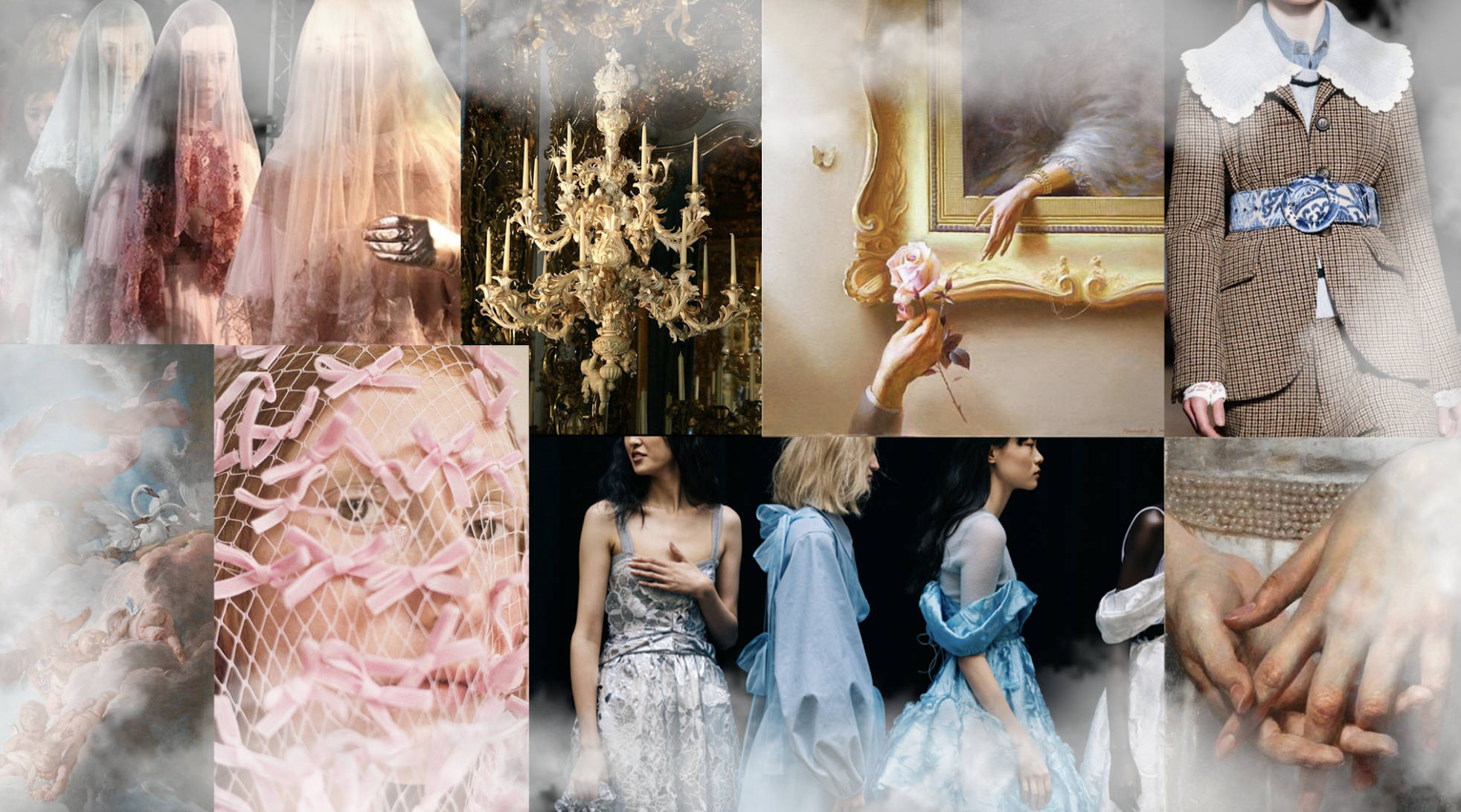
Rebirth
SHEDDING THE ARMOR OF THE DARK AGES
Women’s F/W 2024
the ask:
Forecast fashion trends for womenswear F/W 2024. Use research to predict trends surrounding color, fabrics, patterns, prints, trims, and details. The forecast includes references from runway shows and street-style looks from the past year.
The process:
For our F/W forecast I worked with Jonah Smith, Maggie Majeta, and Destiney Bailey. To curate a fashion forecast focusing around the current Zietgiest. Throughout the duration of this assignment, I assumed a leadership role within a collaborative team tasked with developing a women's wear fashion forecast for the Fall/Winter 2024 season. Working within a group setting, we collectively undertook various components of the project, leveraging individual strengths to achieve our shared objectives. As the team leader, I facilitated regular meetings, ensuring effective communication and coordination among team members while overseeing the allocation of tasks to optimize productivity.
This project provided me with valuable insights into the intricacies of fashion forecasting, encompassing the creation of a cohesive color story, the identification of prevailing zeitgeist themes, and the adept interpretation of emerging trends from both streetwear and runway sources. Through meticulous analysis and synthesis of diverse fashion influences, I gained proficiency in forecasting future mass market trends, thereby honing my ability to anticipate and respond to evolving consumer preferences within the fashion industry landscape.
Color story
Our color theory successfully represents our theme because it shows the fade from the dark ages into the light, rebirth period. We chose colors that represented the richness as well as the soft tones shown throughout the renaissance. We took images that correctly exhibits the famous works of art of the renaissance period as well as the heavy metals and deeper colors.
FABRICS
-
Tulle was used during the Renaissance period as a way to add volume and embellishment to dress, but now has a more universal application. Tulle naturally creates a feminine and delicate feel to any garment, but using it as the primary fabric creates a sheer, textured, and edgy look. Tulle can be used in a stretch formulation for layering pieces, or can be manipulated into a ruched, layered fabric that are reminiscent of the petticoats from the Renaissance era. This resemblance to foundations garments of the time bring this style into the modern era. The resurgence of these traditional fabrics represents the rebirth that is to come and the acknowledgement of our history as we emerge from the dark ages.
-
Velvet was a very popular textile during the Renaissance period, especially among the upper class. Royalty during the Renaissance would have velvet garments that incorporated silk as well, and would even be buried in it. It is a pile weave fabric, which means it has an additional layer of yarns. There are variations of velvet such are velour and velveteen which allow it to be more accessible in the modern era.
-
Damask is a woven fabric, produced on a jacquard loom, that creates an ornate pattern in its production. Damask was used heavily beginning in the early Middle Ages and is often referenced in historical fashion. Because damask is typically produced using the satin weaving technique, these fabrics have a lustrous nature that creates richness in the fabric. Damask is much sturdier than other fabrics but that sturdiness creates a very structured garment. By creating a heavily structured garment with references to this historic fabric, this traditional look is brought into the modern world. During the Renaissance period, silk was typically used for damask, but cotton and wool started to be experimented with. Due to the complicated weaving process and the expensive price of silk at the time, damask was often known to be worn by the elite. The reference to a time known for its love of the excessive battles the current zeitgeist regarding surrounding consumerism and the use of physical goods in the perception of others.
RUNWAY LOOKS
THE VENUS WOMEN:
Art and science during this period had a heavy emphasis on the human form, due to the advances in anatomy. With the resurgence of the Renaissance ideology we will see this emphasis on the human form from fashion innovators. The Venus Woman puts an emphasis on the female form, using sheer materials and form fitting silhouettes to display the figure rather than hide it.
PIECES OF THE PUZZLE
Foundations garments like corsets and structural elements like crinolines provided shape to historical styles. Utilizing these elements allows for reference to these garments, but this style is defined by the visibility of these details. Pieces Of The Puzzle is characterized by fragments of boning, hoop skirts, corsets, and patches of lace. These patches allow for bold details to be combined with more modern styles. In its entirety, this look appears more rough and grunge than that of the entire garment. Utilizing foundation garments allows for the reclaiming of these historically restrictive items to reflect the feel of current feminist movements. By reclaiming these items and presenting them in a more provocative way, it serves as a reminder of the restrictions of the past and acts as armor in the modern world.
A LIFE OF EXCESS
The large, oversized silhouette represents an approach to excess that is standard in the modern world. Overconsumption and mass production is an issue plaguing society, but it illustrates the values of an ancient world. Excess was reserved for the elite, and these oversized silhouettes demonstrate an acceptance of indulgence as we look to the past for guidance.




























